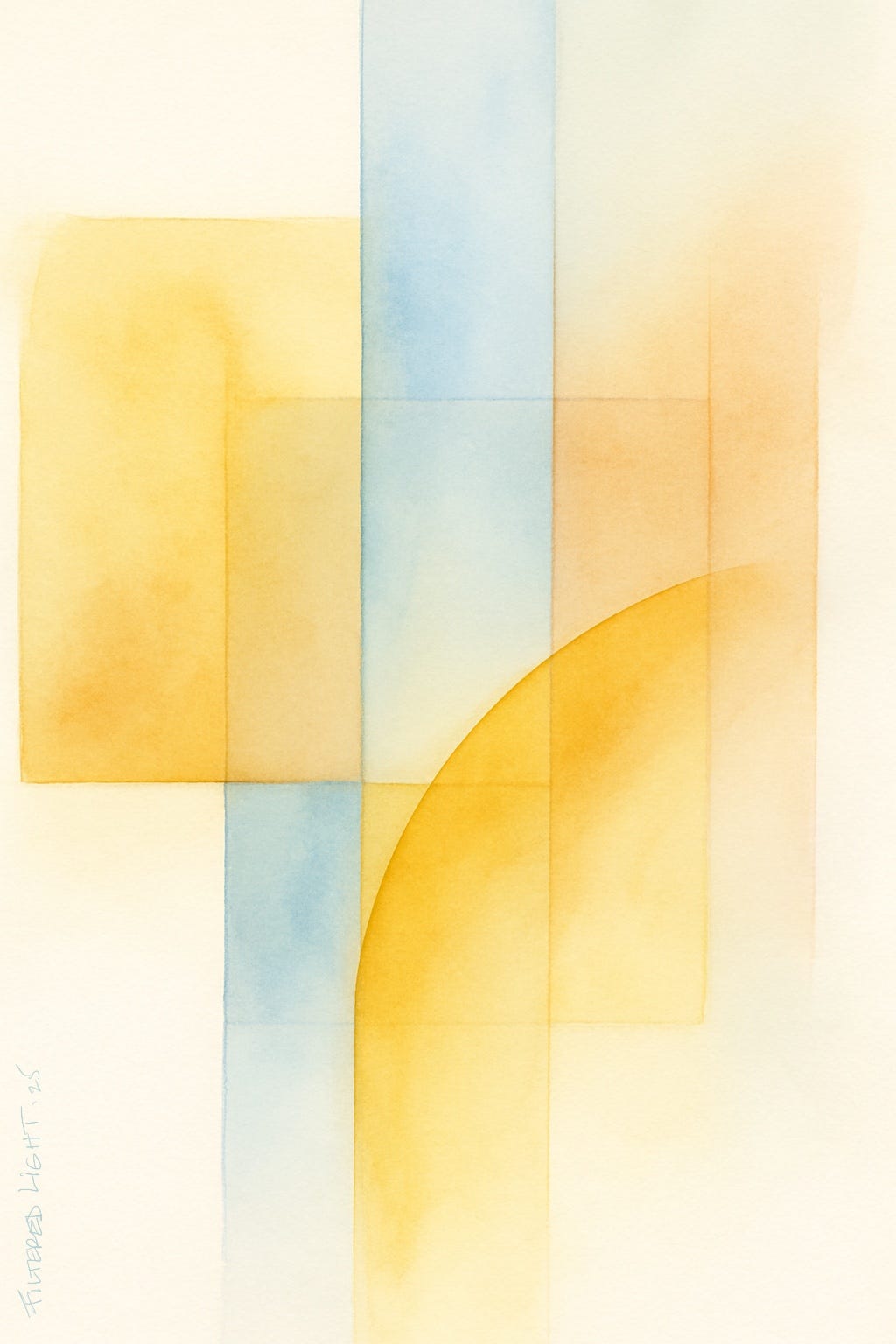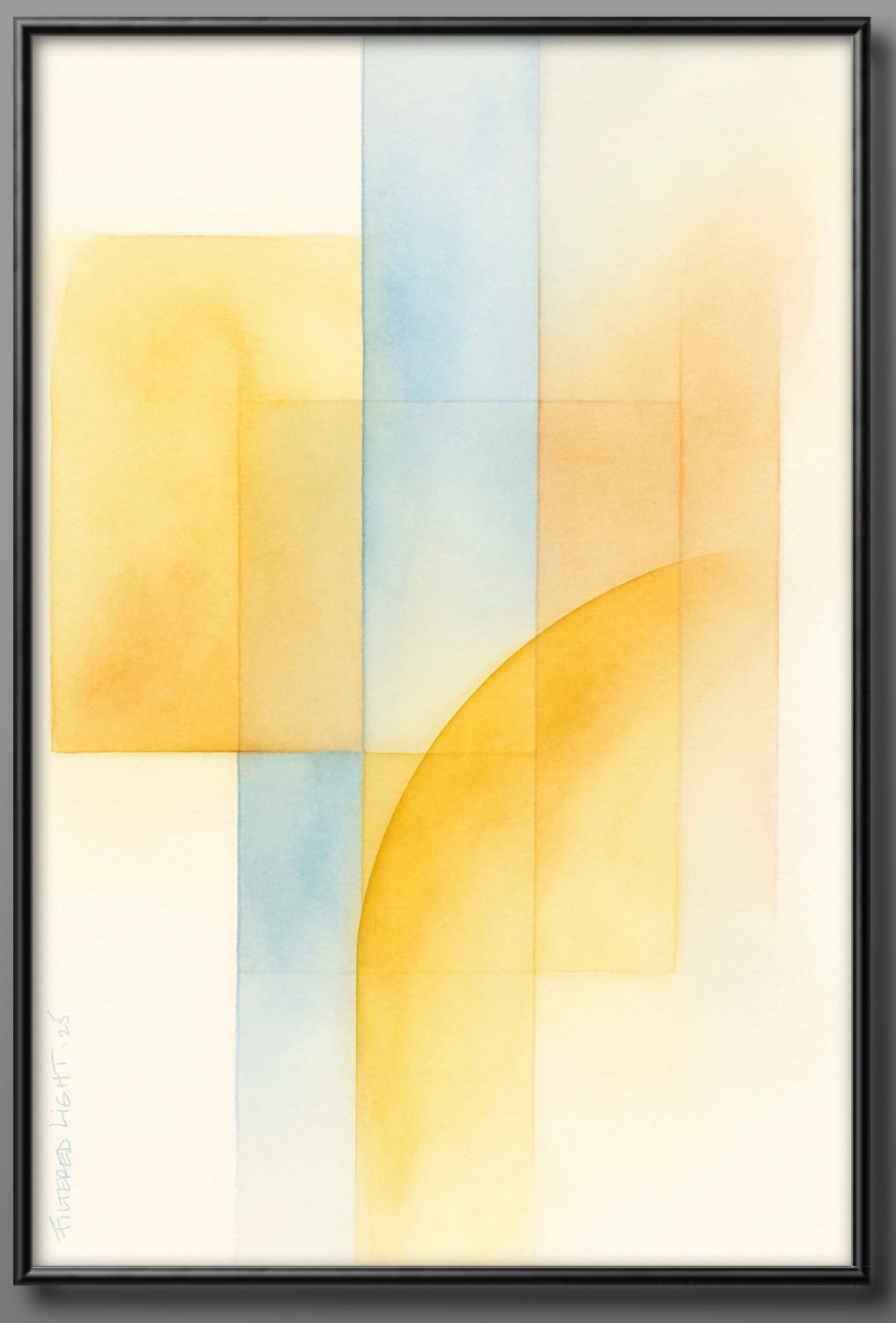
This essay follows the reflections in “Showing Up,” on the quiet labor of care in therapeutic and uncertain spaces. Where that reflection dwelled in the personal, this one looks outward — asking what happens when doubt becomes the architecture we must move through to reach each other.
Why Care Feels So Heavy Now
There’s a reason why it feels like we have to fight for every inch of goodness these days. A reason why it feels like sincerity walks into every situation already under cross-examination.
We live in a culture where trust has become scarce.
As institutions have become more transactional, people have had to become more self-protective. The systems we move through — healthcare, education, public services, even digital platforms — no longer offer us the benefit of the doubt. Instead, we’re asked to prove ourselves constantly:
Are you deserving of help?
Are you telling the truth?
Are you being honest, or trying to manipulate?
Are you performing kindness, or are you for real?
Over time, this institutional suspicion trickles down into the interpersonal. When you’ve been burned by bureaucracy or bait-and-switched by marketing disguised as care, you start to see all kindness through a wary lens. You learn to question everything, even when someone’s just trying to help.
And so, a kind act becomes a negotiation. An offering becomes a risk. You try to do something good, and the first question isn’t, “What does this mean?” but, “What do you want?”
This is the deeper shape of what we’re living through now. It’s not just about emotional fatigue, but about the way the very idea of sincerity has been destabilized.
We don’t just live in a world of bad actors, we live in a world where sincerity itself has been commodified, mimicked, and turned into a strategy. Algorithms now perform empathy. Ads pose as activism. Corporations mimic social care language to build loyalty while undermining the very conditions they claim to care about.
So people become cautious and, often, rightfully so.
And into that gap — where trust, vulnerability, and genuine expression once lived — artificial intelligence increasingly steps in, not just as a tool, but as a substitute. For younger generations raised on devices and digital filters, even basic interpersonal exchanges have started to feel risky or inefficient. Text replaces talk. Emojis substitute for tone. Conversations are outsourced to bots. The messiness of face-to-face connection, with all its awkward pauses and unpredictable emotion, is being swapped for the safety and control of mediated response.
This shift isn’t just about convenience. It’s part of a larger pattern where the raw, unfiltered moments of real human presence— with the pauses, the missteps, and the slow work of genuine human to human empathy — are being smoothed over and optimized away. But that human presence isn’t failure, it’s where authenticity lives. In an AI-driven world that edits and polishes every exchange, real presence remains one of the last places humanity still shows up. When AI, focused on efficiency, steps in with a kind of artifice to smooth awkward sentences or predict what a human meant to say, it’s finishing your thoughts and feelings for you — and in doing so, those thoughts and feelings stop being fully yours.
What we lose in human interactions isn’t just texture, originality, or independent thought, but our own evolution and our genuine ongoing emotional growth.
Using these tools to substitute for human interaction teaches us, subtly, to value polish over authentic presence.
To interpret fluency as truth.
To mistrust the slow, uncertain work of real-time empathy.
All this change means that people who try to act from genuine care often find themselves stuck in a loop:
Explaining, clarifying, tiptoeing, self-monitoring.
Trying to prove that their effort isn’t a performance.
Trying to move through doubt that they didn’t create — but that they still have to carry.
This is the emotional tax of trying to live ethically in a suspicious world.
So when it feels like good behavior has to prove itself over and over, it’s not in your head. It’s a function of deeper forces: the erosion of public trust, the financialization of basic care, and the way manipulation has taken on the tone and costume of sincerity.
And yet, even with all of this, as CTMs, we still show up.
That’s not just resilience. It’s a kind of morality, a refusal to let cynicism shape every exchange. A willingness to keep caring and showing up, not because you expect praise or certainty, but because you know what kind of world you want to live in, and you choose to practice it in real time.
That’s not naïveté or a hollow façade of goodness — it’s a meaningful vision and purpose.
One gesture at a time.
“Filtered Light”
Our care doesn’t always arrive as we intend. It moves through doubt, through filters, through distance — but still arrives whole.
This watercolor, Filtered Light, is meant as a gentle, abstract rendering of the emotional and philosophical ideas behind The Architecture of Doubt. It uses soft geometry and overlapping translucent washes to suggest how good intention moves through uncertainty and skepticism, yet still arrives with integrity.
Vertical and horizontal rectangles in soft blue, gold, and sienna tones overlap without strong borders, creating a feeling of porousness and filtering.
These represent the layers that intention passes through — social doubt, internal self-questioning, constructed appearances and institutional structures.
The large, golden semi-circle entering from the bottom right interrupts the structure — a warm, unmeasured force flowing into the composition.
This shape embodies the offering — care, sincerity, or presence — trying to move through or into a world of structured expectation.
Ghost-like straight lines suggest an architecture or system that isn’t oppressive, but is present. This is meant to symbolize how social or bureaucratic frameworks shape and sometimes constrain the reception of human care.
The fade to negative space allows for breath and uncertainty, reinforcing that not everything has to be filled or resolved. It’s meant to give the composition emotional humility, room for doubt, interpretation, and quiet.
Agnes Martin’s quiet, devotional abstraction informs this structure: spiritual without overt iconography, contemplative without being a spectacle. Like therapeutic presence, her work uses restraint not to hold back, but to make space for attention, for feeling without pressure. The grids don’t confine. They steady. They hold things gently in place.
Maybe it also echoes Paul Klee’s vision of structured play, the idea that a line doesn’t just follow rules, it explores. To “take a line for a walk,” in Klee’s words, is to let form wander with intention. That same spirit guides the blend of order and openness in this attempt.
Not in form, but in philosophy. Martin’s restraint, the invitation to stay with something quiet and unresolved, informs the emotional architecture. And Klee’s idea of “taking a line for a walk” isn’t about whimsy here, but about letting intention unfold gradually, with softness, not control.
I feel like this might be considered a contemporary therapeutic art that would not feel out of place in a hospital, hospice, or contemplative space, not designed to distract or dazzle, but to accompany.
I meant to gently illustrate a central question from my companion essay:
“How does care move through doubt without disappearing?”
Rather than fight the structure, the arc moves through it. It softens the complexity of it. The transparency shows that we can be shaped or influenced by systems without being lost or becoming them. It’s meant to remind the viewer that even when intention is diffused, it still shines through.



